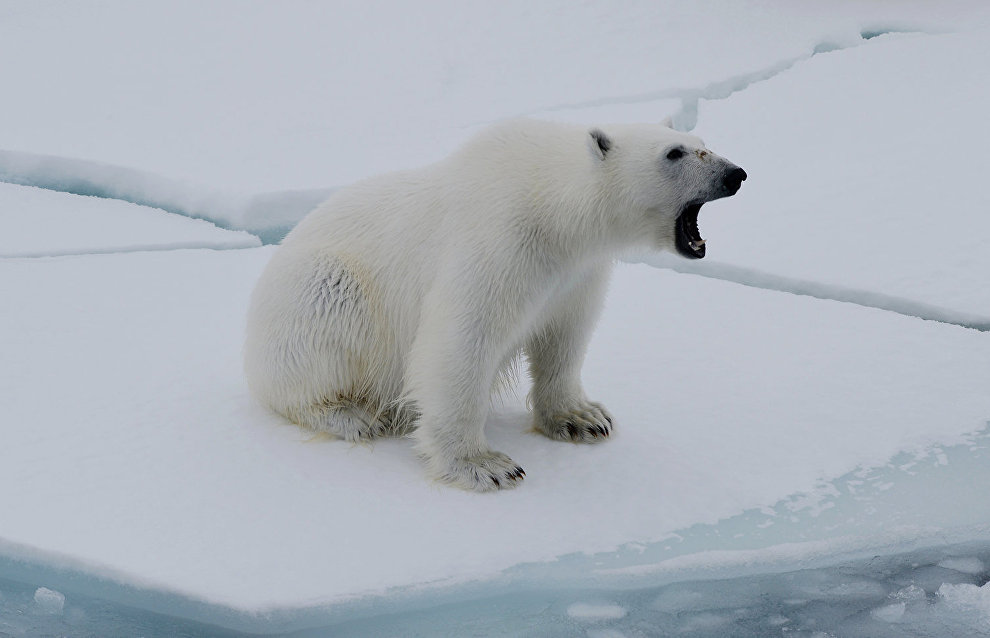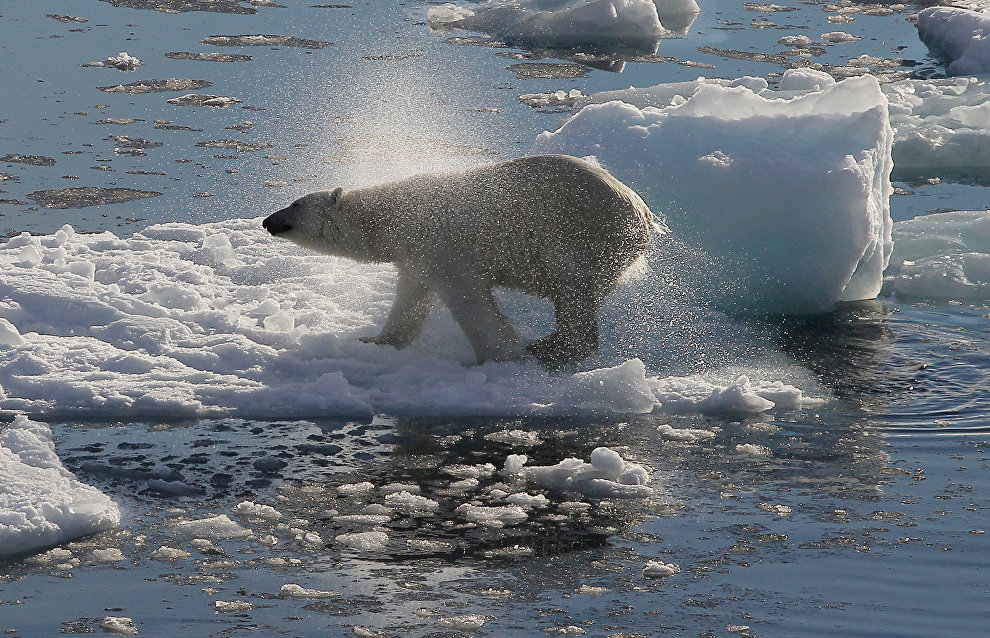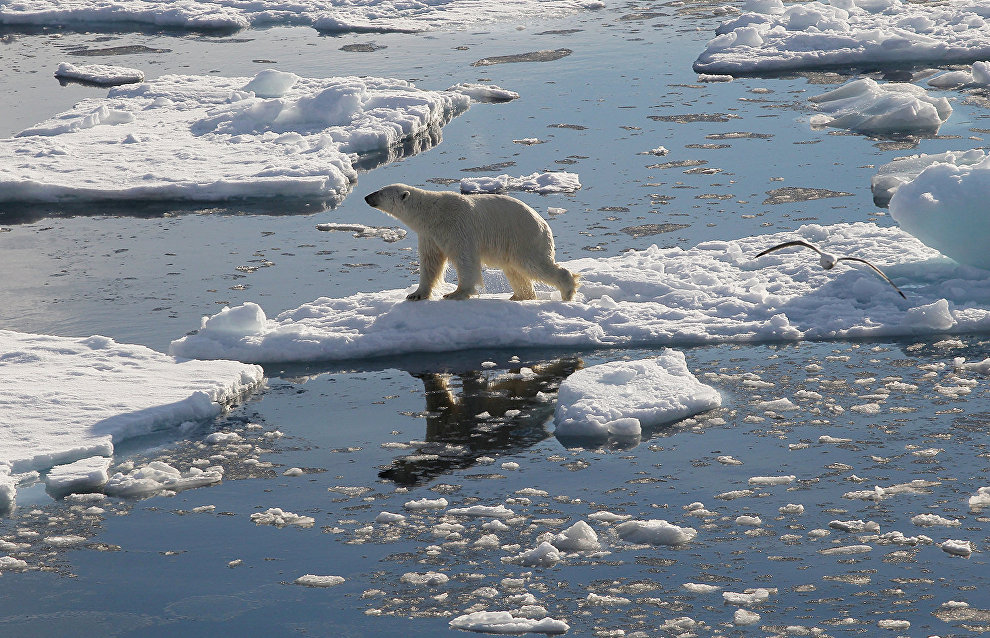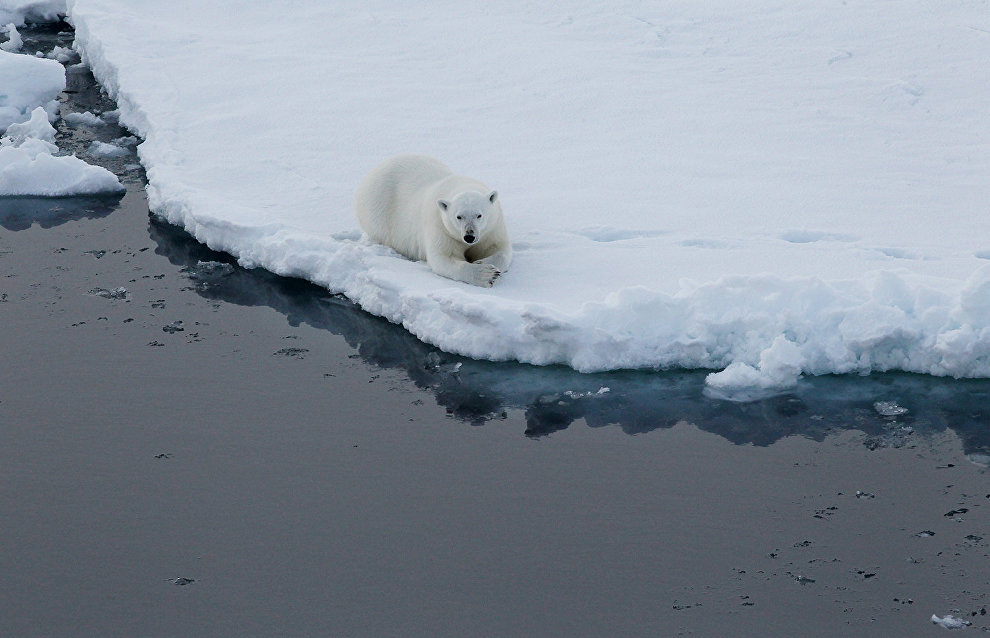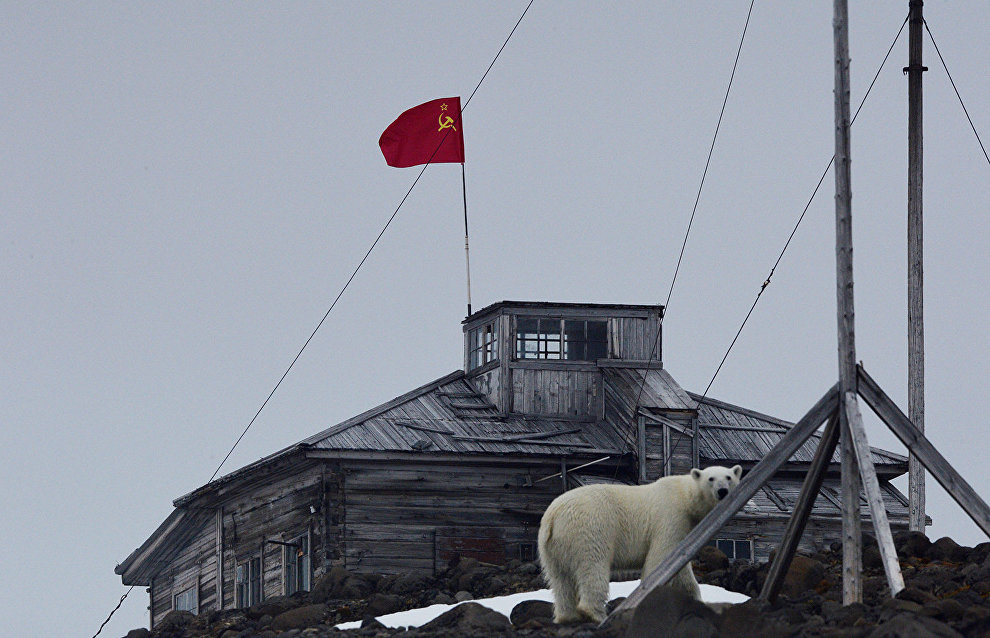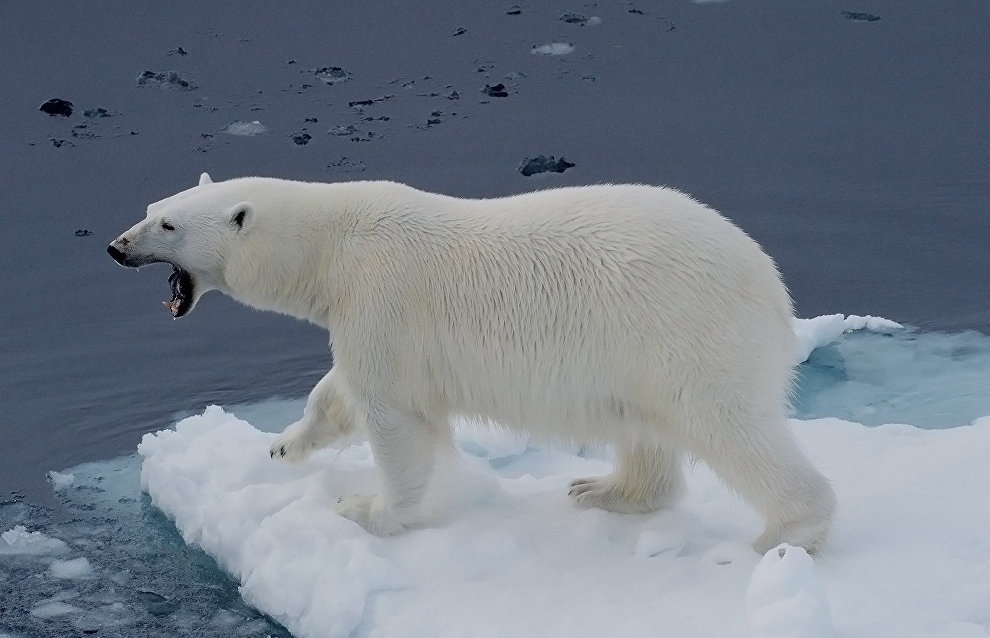The polar bear (Lat. Ursus maritimus, “maritime bear") is one of the world’s largest land carnivores. It lives in the Arctic and is considered the symbol of the region.
Polar bears feel comfortable in the harsh conditions of the Arctic: they prefer temperatures of minus 45 degrees Celsius and lower. Their thick coat and a layer of fat keep them warm. Polar bears are not afraid of drifting ice, and they can swim for days without resting. Their developed sense of smell allows them to find their prey – ringed seals – at a distance of up to 32 kilometers.
The Arctic region is home to some 20,000-25,000 polar bears, but the population keeps decreasing. The polar bear is on the IUCN Red List of Threatened Species and the Russian Red Data Book. In Russia, polar bear hunting is completely prohibited.













